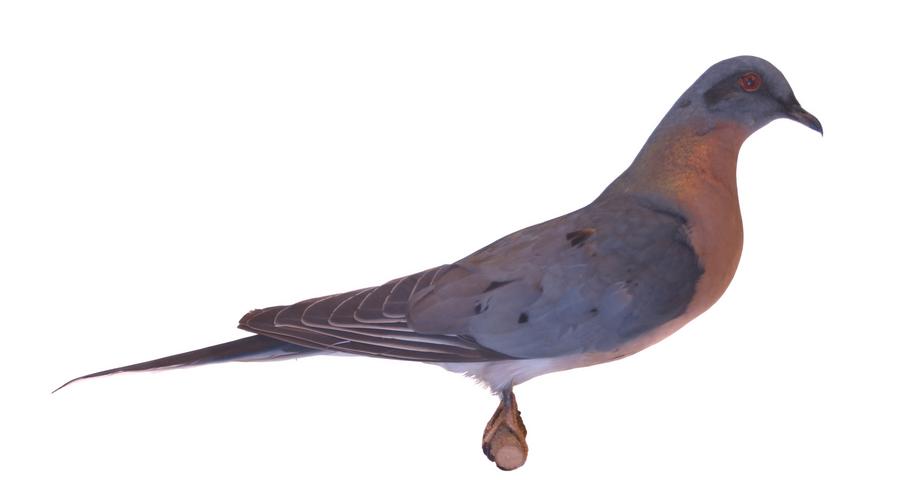|
| |
|
Classification
Information
Domain - Eukarya
Kingdom - Animalia
Phylum - Chordata
Class - Aves
Order - Columbiformes
Family - Columbidae
Genus - Ectopistes
Species - Ectopistes
migratorius
|
Citation: Myers, P., R. Espinosa,
C. S. Parr, T. Jones, G. S. Hammond, and T. A. Dewey. 2006. The Animal
Diversity Web (online). Accessed April 14, 2007 at
http://animaldiversity.org.
Sponsored in part by the Interagency Education Research Initiative, the
Homeland Foundation and the
University
of Michigan Museum of
Zoology. The ADW Team gratefully acknowledges their support.
©1995-2006, The Regents of the University of Michigan and its licensors.
All rights reserved.

|
The passenger pigeon (Ectopistes migratorius) was in the domain
Eukarya because it was multi-cellular, had
membrane bound organelles, reproduced sexually, it also had multiple,
linear chromosomes, and completed cell division (meiosis and mitosis).
It was in the kingdom Animalia because its
cells did not have cell walls, it was motile, and it was
heterotrophic.
The passenger pigeon was in the phylum Chordata
because it was bilaterally symmetrical, a deuterostome, and it had a
notochord, nerve cord, visceral clefts and arches. It was in the
sub-phylum Vertebrata because it had a
vertebral column (segmented spinal column). The passenger pigeon
was in the class Aves because it had
modified epidermal scales (feathers), wings, a disproportionately long
neck, air cavities in its skeleton that allow for lighter bone structure
and a keeled sternum which were conducive to
flying. They were also
oviparous,
had distinct bills, were warm-blooded, and had double circulation.
It was in the order Columbiformes because
they were land birds. The passenger pigeon was in the family
Columidae because they produced "pigeon
milk" from their crop lining, their young hatched blind and without true
down, they drank by sucking or pumping, and they had thick plumage with
the feathers set loosely in the skin. It was in the genus
Ectopistes because it had a straight
bill, slender body, small head, short feet with the outer toe slightly
shorter than the inner one, long wings where the first and second quills
were the longest and equal, and it had a long tail that was pointed. It
was also highly gregarious. It was in the species
Ectopistes migratorius because of its
migration patterns in the search for food. The passenger pigeon (Ectopistes
migratorius) is
extinct. For a more detailed view of the passenger pigeon's
phylogeny check
out the next page! |
Next
Page
|



